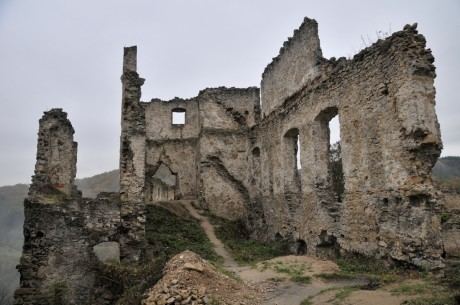 | ||
Upper Váh region (Slovak: Horné Považie) is the tourism region in the north-west of Slovakia, because of its beautiful countryside it is one of the most visited regions in Slovakia. In the past it was part of Trencsén County.
Contents
Districts
Považský hrad
A romantic ruin of medieval Gothic castle is making an essential silhouette on the right side of the river Váh, near Považská Bystrica. It is built on a cliff 497 meters above sea level. Due to its location it was one of the most important castles guarding the valley of the river Váh, location of the castle is attractive also nowadays because it is set above important rail and road routes. At the peak of its fame it was home of around 400 people. It is famously known as an "eagles nest" of the important noble family of Podmaniczky, which controlled most of the region.
Budatín Castle
Budatín castle is a castle in north-western Slovakia. It was built as a guarding castle in the second half of the 13th century near the confluence of the Kysuca and the Váh, where tolls were collected. At the beginning of the 14th century, originally royal fortress passed into the hands of Matthew Csák and the castle, especially towers were fortified, and inside the fortress a new palace was built.
Strečno Castle
Strečno castle is a castle in north-western Slovakia. It is the symbol of slovak feudalism. It was built in the 14th century. Leopold I ordered to destroy the castle in the 17th century, similarity with Považský hrad. It is part of Slovak national heritage
Bytča Castle
Bytča castle is a castle in the centre of the town of Bytca. It was built in the 13th century by the archbishop of Nitra. From 1563 it became the possession of Frantisek Thurzo. He built a manor house around an old Gothic castle. Works ended in 1574. A famous Italian architect Kilian of Milan was invited to supervise the works. Another great Italian architect was called to supervise the repairs in 1612, it was Pocabello.
